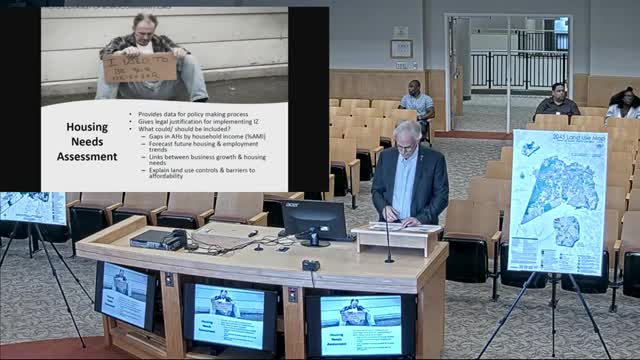Housing assessment reveals urgent need for affordable homes
September 04, 2024 | Apex, Wake County, North Carolina
This article was created by AI summarizing key points discussed. AI makes mistakes, so for full details and context, please refer to the video of the full meeting. Please report any errors so we can fix them. Report an error »

During a recent government meeting, officials discussed the critical components of a housing needs assessment aimed at addressing affordable housing challenges in the community. The assessment will analyze the local workforce by income levels and compare these figures to the availability of housing units that are affordable for those income brackets. This approach emphasizes the importance of forecasting housing and employment needs to ensure that future developments align with community demands.
The discussion highlighted that the process of bringing affordable housing to fruition typically spans three to five years, necessitating a forward-looking strategy. Officials noted a significant connection between planned residential and commercial developments and the subsequent demand for affordable housing, particularly for service workers.
Barriers to affordability were also addressed, with concerns raised about large lot sizes, extensive setbacks, and low-density limits. However, local officials expressed confidence that these issues are not prevalent in Apex.
The meeting further explored the conditions necessary for effective inclusionary zoning, which is most successful in strong housing markets with high demand for new homes. The presence of developable land—defined as land that can be utilized for new projects rather than just vacant land—was identified as a key factor. This includes underutilized properties such as office buildings, strip malls, and even land owned by faith communities, which could be repurposed to meet housing needs.
Overall, the discussions underscored a proactive approach to addressing housing shortages, emphasizing the need for strategic planning and collaboration to create affordable housing solutions in the community.
The discussion highlighted that the process of bringing affordable housing to fruition typically spans three to five years, necessitating a forward-looking strategy. Officials noted a significant connection between planned residential and commercial developments and the subsequent demand for affordable housing, particularly for service workers.
Barriers to affordability were also addressed, with concerns raised about large lot sizes, extensive setbacks, and low-density limits. However, local officials expressed confidence that these issues are not prevalent in Apex.
The meeting further explored the conditions necessary for effective inclusionary zoning, which is most successful in strong housing markets with high demand for new homes. The presence of developable land—defined as land that can be utilized for new projects rather than just vacant land—was identified as a key factor. This includes underutilized properties such as office buildings, strip malls, and even land owned by faith communities, which could be repurposed to meet housing needs.
Overall, the discussions underscored a proactive approach to addressing housing shortages, emphasizing the need for strategic planning and collaboration to create affordable housing solutions in the community.
View full meeting
This article is based on a recent meeting—watch the full video and explore the complete transcript for deeper insights into the discussion.
View full meeting
